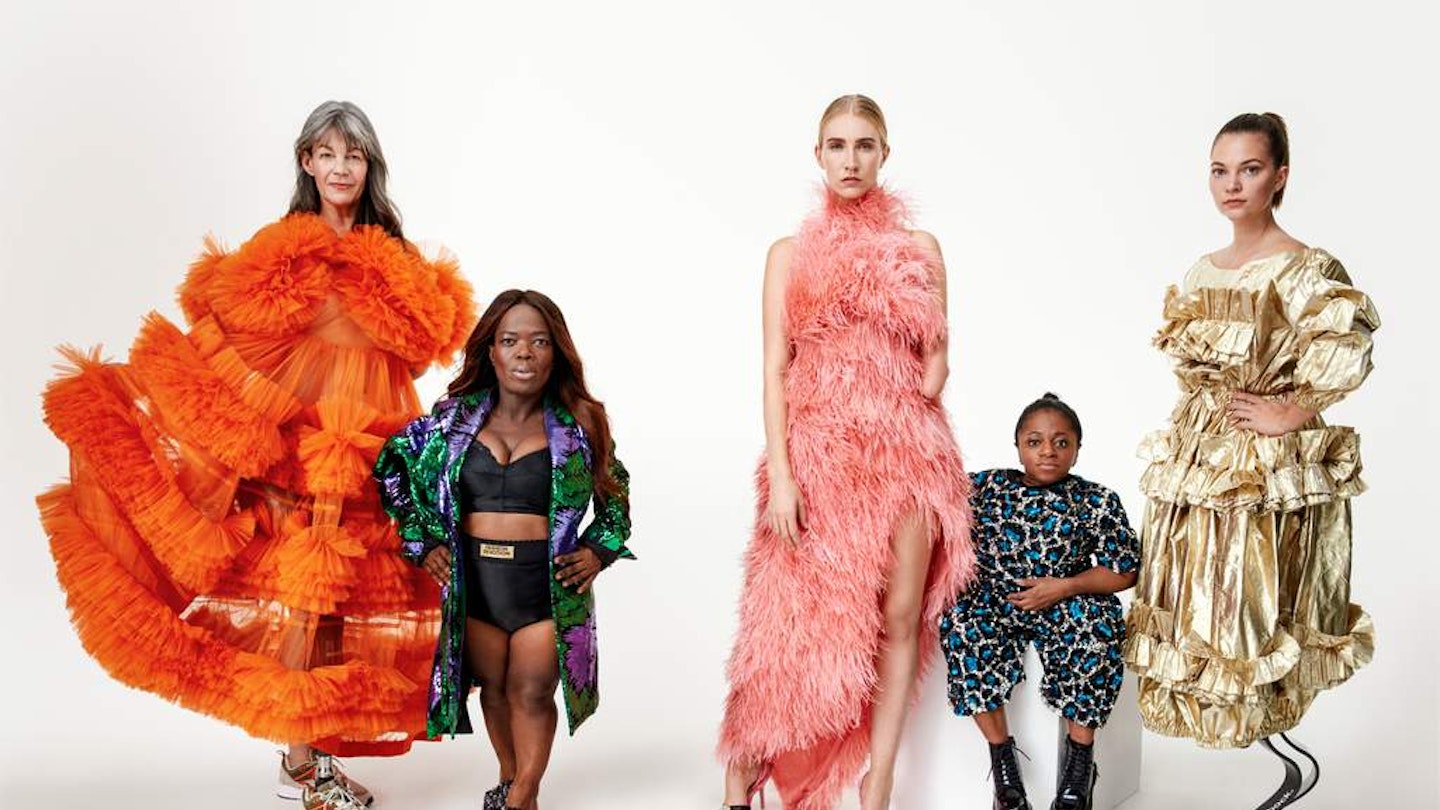For all the positive changes the fashion industry is making in terms of diversity, there are still groups of people who feel under-represented. Disabled models are rarely seen on catwalks, on billboards or in the pages of glossy magazines.
We want to change that, starting today. To celebrate our Big Fashion Issue, Grazia has brought together five women, among them an athlete, dance champion, designer and full-time model – all of whom have an impairment or condition. These women are smart, stylish and fashion-conscious. And all of them resent not seeing themselves represented in the industry they love.
Lack of visibility across the board, a lack of access to high-end clothes and to the shops themselves feels like a reminder that fashion ‘is not there to serve us’, says Mary Russell, who has dwarfism. ‘For so long we’ve had to alter and change clothes and our shopping habits,’ she says. Monique, who was born with brittle bone disease, adds, ‘The industry needs educating – fast. I don’t want to be defined by my wheelchair and fashion helps people see me first.’
Her fellow models agree that fashion empowers them, but talk of the daily frustration of simply getting dressed: including buttons, zips, narrow trouser shapes, restrictive necklines – not to mention the difficulty of actually finding accessible shopping spots.
But there’s hope that change maybe coming. Last year, designer Tommy Hilfiger launched the Adaptive clothing line, featuring items with magnetic buttons, one-handed zips and adjustable Velcro hemlines. ‘Tommy Adaptive’s mission is to be inclusive and empower people of all abilities to express themselves through fashion,’ the company said.
And earlier this year, American lingerie brand Aerie – which has stopped retouching any of its ad campaigns– featured women with a range of impairments and chronic conditions wearing their designs. The sight of women with polio, crutches or a Crohn’s disease colostomy bag clipped to their knickers sparked a powerful response on social media, with many people commenting on how refreshing it was to finally see their community represented in fashion.
It was a reminder that accessible fashion makes good business sense, too. Disabled shoppers are far from a niche market: nearly one in five people in England and Wales are disabled – that’s a market worth £249 billion.
So, why has progress only happened at a glacial pace? And how can first inclusion, and then the normalisation of disability in the fashion world, actually happen? Here, our five women, who are petitioning for change, have their say...
‘I won’t wear a prosthetic arm because I know it’s only there so I can look “normal” to others’
Kelly Knox, 34, from London, is a full-time model represented by MiLK and was one of the first disabled models to participate in London Fashion Week last year. She is mother to three-year-old son Jenson and was born with part of her left arm missing.
To me, my missing left arm was always normal. I was born with it and we never used the word ‘disabled’ in my house growing up. It wasn’t until 2008, when I started modelling after winning Britain’s Missing Top Model [a reality show where a disabled woman wins a magazine shoot], that I realised quite how much society viewed my body as ‘different’. I was determined never to wear a prosthetic arm because I know it’s only there so I can look ‘normal’ to others. But it was clearly a barrier; I signed to an agency after the competition but there were no other models who looked like me and I saw others getting picked for jobs that I knew I was capable of. I was surrounded by perfection and felt like I had no chance.
I felt alone, ugly, lost and worthless. It made me so angry that I decided I’d have to change perceptions of disabled people in fashion – to show we can be desirable, too. Growing up, I bought loads of magazines and never once saw myself represented. Today it must be even worse for young girls, because social media peddles this notion of ‘perfection’. If non- disabled girls are feeling the pressure to look a certain way, imagine how disabled girls, who can’t hide behind a filter, must feel scrolling through Instagram?
I’ve had a few negative comments in my time; in 2008 a radio host wrote a disgusting piece, laughing at all the campaigns I wouldn’t be able to do with one hand. That would have crushed me 10 years ago, when my sense of identity was shaken, but now I wear my self-love like armour and know my body is nothing to be ashamed about.
Besides, I feel we’re finally on the cusp of positive change. When I did a campaign for Primark in July, my social media went crazy with people telling me how positive it had made them feel about their bodies. I now believe I was given this body so I could use it to make a difference – by changing the way disabled people are viewed.
‘I can fly to Florida by myself, so why can’t I get my wheelchaIr Into a changing room?’
Monique Jarrett, 32, is a European champion in wheelchair dancing with Strictly Wheelchair Dancing and co-director for Triple C*, a drama-based organisation. She works part-time at a special needs school and is a model represented by Zebedee Management (a specialist agency for disabled and different talent). She was born with brittle bone disease.
I’ve always loved fashion but I often have to appreciate it from afar. It’s always the same: I see something I like in a shop window, go inside and ask if they have disabled changing rooms and watch the attendant’s face fall as she tells me – no they don’t. It’s deflating but I force myself to be overly polite as I watch them freak out and try and get me into a regular changing room – where I already know my wheelchair won’t fit.
It feels inexcusable that larger shops still don’t have the right changing rooms – or they’re using them for storage. Legally, everywhere is supposed to be accessible but there are loopholes that stores use to wriggle out of responsibility, for example, if it’s a listed building. It’s so frustrating because they do just enough to meet requirements – like have disabled toilets – but they will be upstairs with no lift . People are surprised I can go shopping on my own, but I’m very independent. I’ve been in a wheelchair since I was five, but today I have my own apartment, I drive a van, I cook, I even flew to Florida by myself a few years ago. The only thing stopping me going shopping on a Saturday is that I can’t go somewhere private to try on clothes, or can’t find my size. It feels ridiculous. After all, we’ve all got to get dressed. I hope this shoot draws attention to those who never see themselves reflected in the media. We can all relate to fashion, don’t leave us out of the conversation.
u2018We Deserve To Feel Part Of Fashionu2019: How Can Inclusion And Normalisation Of Disability In The Fashion Industry Actually Happen?
 1 of 6
1 of 6‘We Deserve To Feel Part Of Fashion’: How Can Inclusion And Normalisation Of Disability In The Fashion Industry Actually Happen?
Kelly Knox wears Gucci
 2 of 6
2 of 6‘We Deserve To Feel Part Of Fashion’: How Can Inclusion And Normalisation Of Disability In The Fashion Industry Actually Happen?
Monique Jarrett wears Gucci Kids
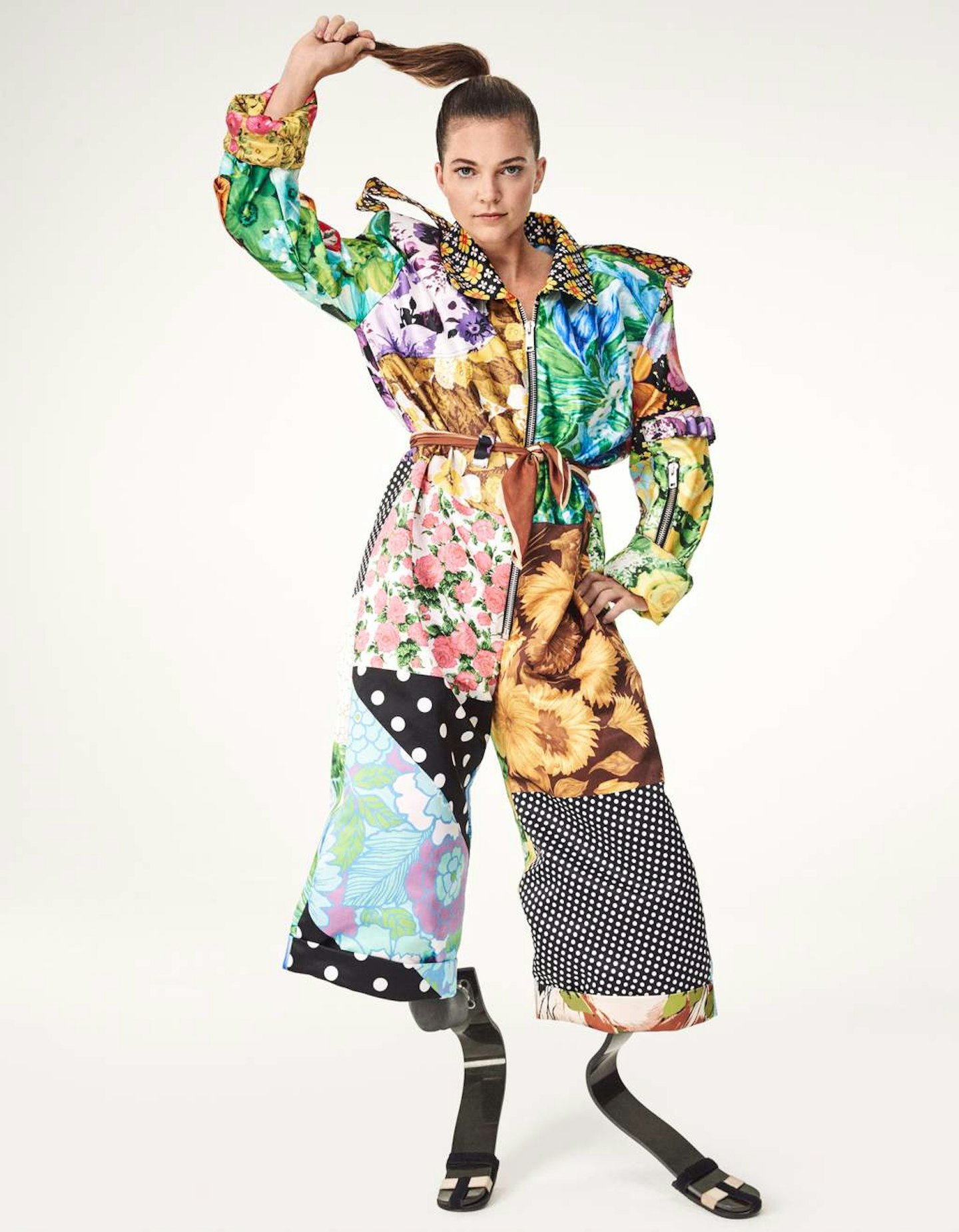 3 of 6
3 of 6‘We Deserve To Feel Part Of Fashion’: How Can Inclusion And Normalisation Of Disability In The Fashion Industry Actually Happen?
Marlou van Rhijn wears Richard Quinn
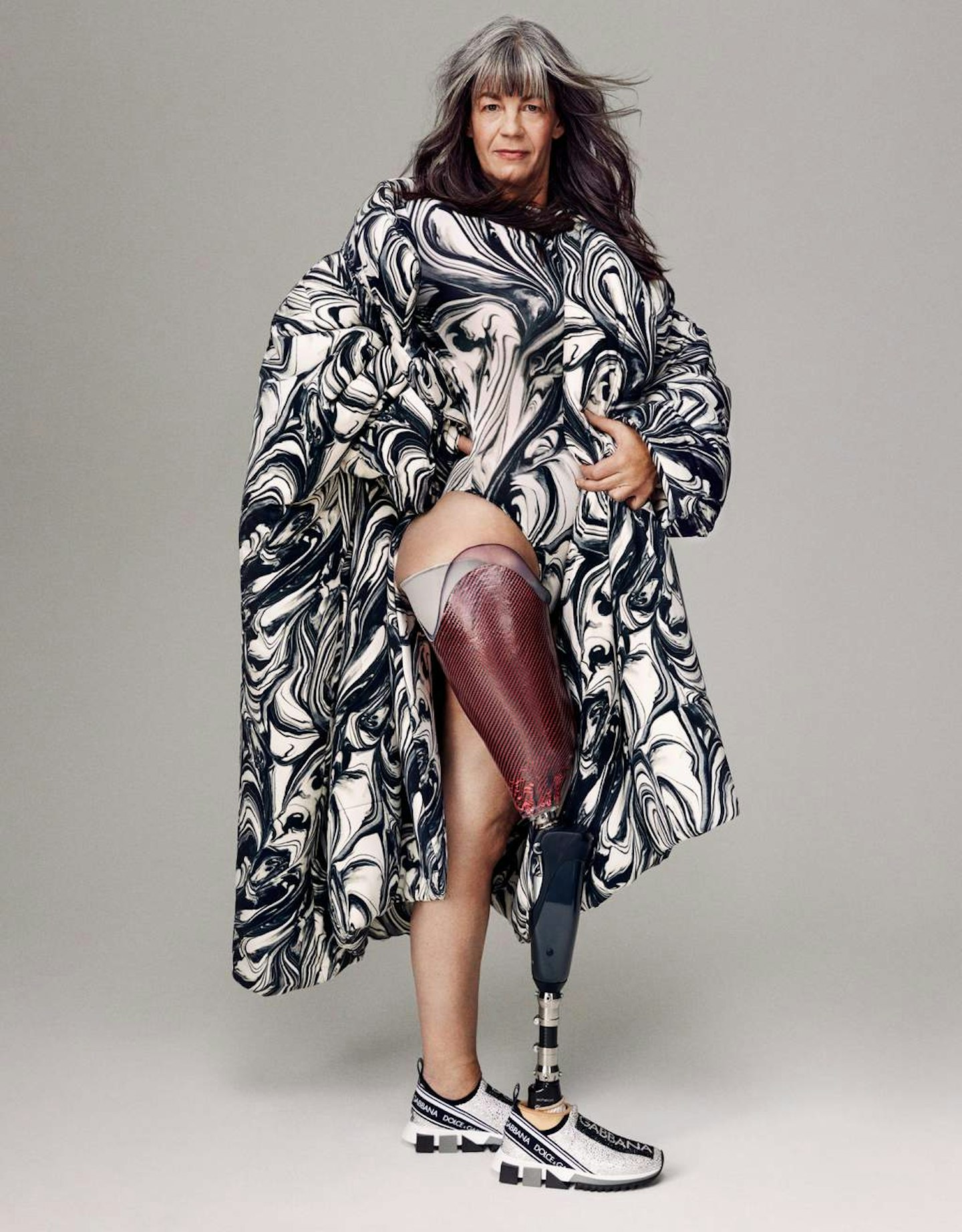 4 of 6
4 of 6‘We Deserve To Feel Part Of Fashion’: How Can Inclusion And Normalisation Of Disability In The Fashion Industry Actually Happen?
Nancy Harris wears Norma Kamali
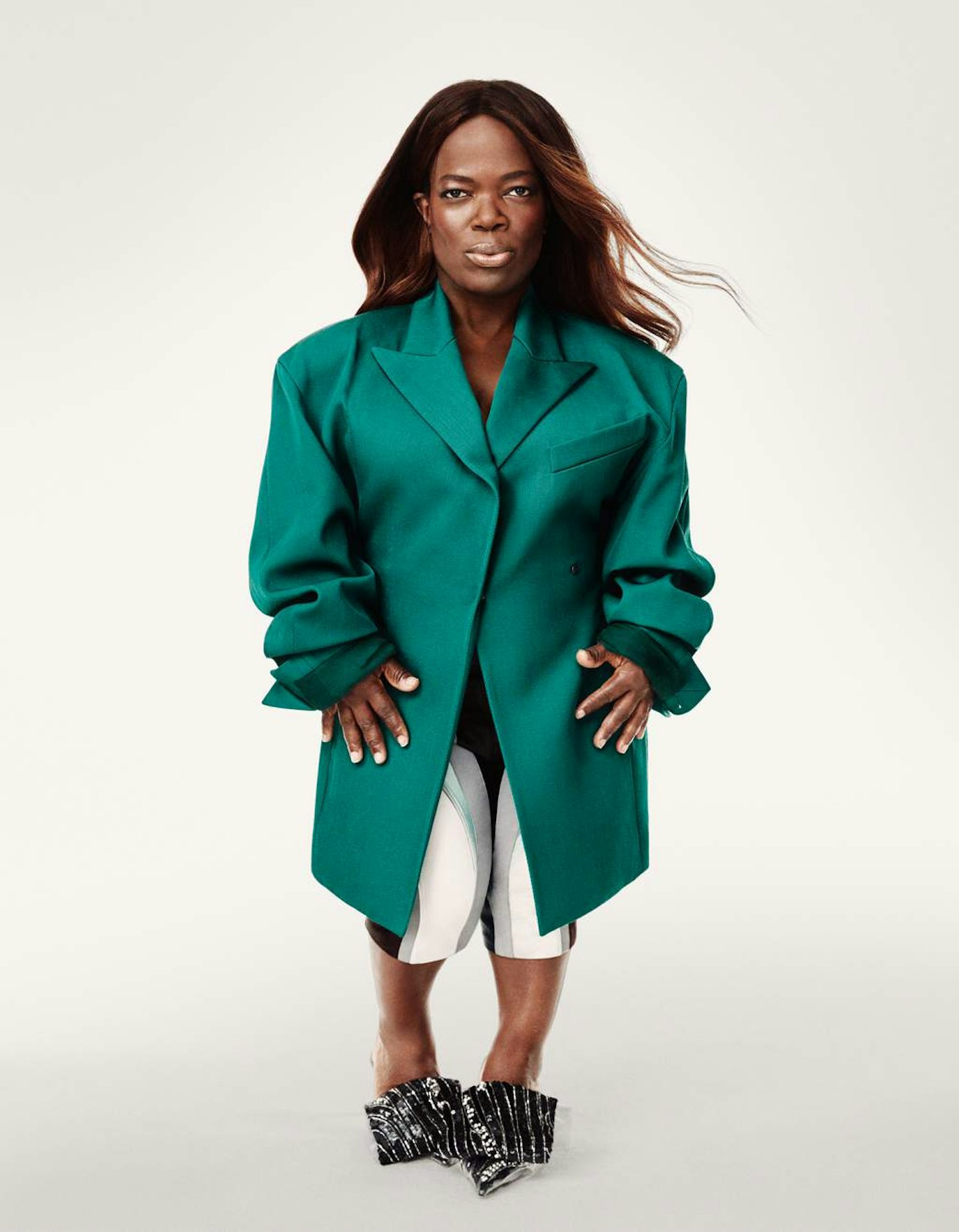 5 of 6
5 of 6‘We Deserve To Feel Part Of Fashion’: How Can Inclusion And Normalisation Of Disability In The Fashion Industry Actually Happen?
Mary Russell wears Mugler
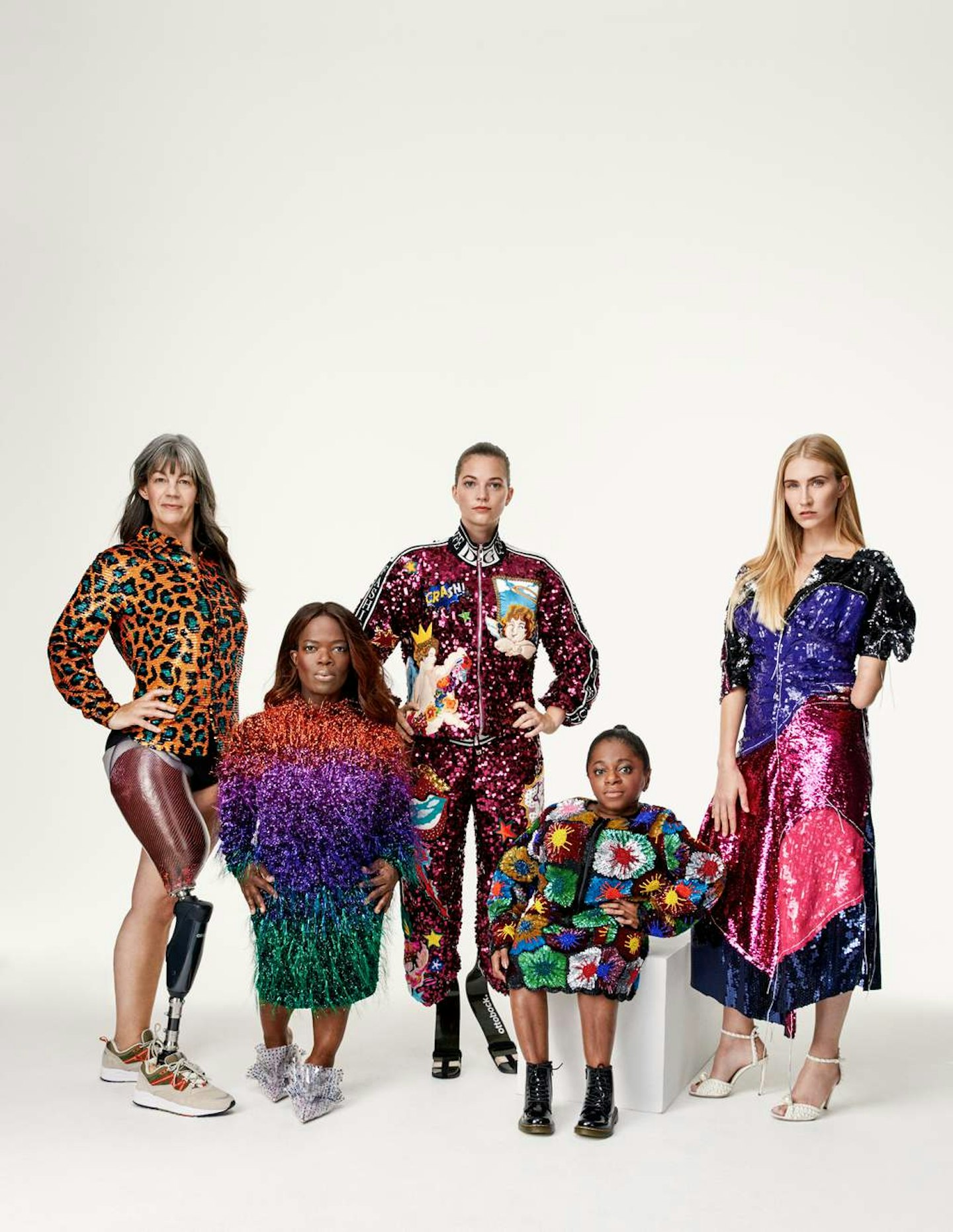 6 of 6
6 of 6‘We Deserve To Feel Part Of Fashion’: How Can Inclusion And Normalisation Of Disability In The Fashion Industry Actually Happen?
Nancy wears Ashish shirt and Karhu trainers. Mary wears Ashish dress and Midnight OO by Ada Mokosar shoes.Marlou wears D&G top and trousers.Monique wears Ashish top and skirt, Dr Martens boots.Kelly wears Marni dress and Jimmy Choo shoes.
‘Sometimes people forget you’re just a human with a leg or two missing’
Marlou van Rhijn, 26, is a professional Dutch sprinter who runs on carbon fibre blades and won gold in the 2012 Paralympic Games. She was born without lower legs.
If I’ve ever come across barriers to anything I can’t wear, I’ve found a way around it. As a teenager, I was desperate to wear heels, so I became the first person in Holland to get prosthetic feet especially for heels flown over from the US, so that I could. It showed me that if I want something really badly, I’ll find a way to wear it.
I got into sports at 12 when I put on a bit of weight and realised I needed to do some exercise. I swam professionally first, then got into athletics at 18 because I loved to win. I never had a perspective on disability because I never felt different. I identify with people who love sports more than I identify with people who have legs missing. The only difference between me and non-disabled athletes is that we compete in different competitions. I understand why we have to, but think we should be able to take part in the same tournaments.
Sometimes, people just need reminding how normal disability is– whatever ‘normal’ is. They forget you’re just a human being with a leg or two missing. Every industry needs to consider disabilities more – and portray a more honest image of society. But fashion even more so; because fashion itself is a way to show just how unique you are. And that’s why we deserve to feel part of it.
‘I hid my prosthetic leg behind shapeless, baggy clothes’
Nancy Harris, 51, is an NHS counsellor from Bedfordshire, an advocate for children with autism and an agony aunt for the teenage magazine ‘Visableinc’. She also models and is represented by Zebedee Management. She has two children, George, 20, and Jazz, 18, and had to have her leg amputated after a trampolining accident when she was 30.
After my accident, I didn’t know where to turn in terms of clothes. I hated how I looked and grew depressed, quickly losing my sense of style and identity. I hid my prosthetic leg behind shapeless, baggy clothes. It wasn’t until I approached 50 and was watching the Paralympics that the fog started to lift I remember thinking: ‘They’ve got nothing to hide, why should I?’
I let my hair go grey and started exploring how to dress again – but I didn’t anticipate how tired I’d get when shopping and how few shops have any benches. It was infuriating that I couldn’t wear a number of thinner fabrics any more because, with a plastic limb, there’s no give. I had to buy huge sizes and fit them to myself at home.
I’d spent years telling my daughter, Jazz, to be confident until, one day, she asked why I covered up so much. I explained I was embarrassed about how I looked. She told me to take my own advice and, now, my new-found conviction is thanks to her telling me I can wear whatever I want. I give my children the same life advice I give teenagers who write into Visableinc – if you feel down, remember it will get better. Life isn’t over, it’s just going to be different.
I started modelling to increase the representation of disabled people in fashion, though I’ve not seen any other similar role models with their prosthetic leg showing in shoots. It makes me feel missed and forgotten; like I’m not a valued member of society. But I don’t want to be in the shadows. I want to show everyone we’re human. We should be out there, too.
‘I love fashion but it’s very diffIcult for me to shop’
Mary Russell, 49, is a model, athlete and student fashion designer for people with dwarfism from Huddersfield, who arrived on our shoot wearing one of her own designs, a top emblazoned with the logo ‘Dwarfism beautiful’. She won four gold medals in the World Dwarf Games in 2013 and was training for the Rio Paralympics until she had to step down with an injury.
People think, because we’re little, people with dwarfism don’t care about looking stylish. But I love fashion; it’s just very difficult for me to shop off the peg. I have to buy something in its entirety and then pay to alter it – which changes the style and feels unfair considering the often extortionate price. It makes me feel marginalised, odd and like nobody cares; like I must have the least desirable body shape in the world if clothing is never made to fit me. In some ways, I wish I wasn’t so in-tune with how I’m treated in shops, but I always notice the sigh or eye-roll when I ask a shop assistant to bring things down to my level. I leave feeling like a burden.
There are around 6,000 of us in the UK but fashion doesn’t cater for different body types, which is why I’ve started a fashion line to help people with dwarfism access high-end clothes. My message is that we matter too; as does fashion, because it makes you feel empowered and wonderful.
That’s a lesson I learned from a young age. I’m black and I have dwarfism. I put up with a lot of prejudice when I was growing up. I’ll never forget a girl looking at me when I was shopping as a teenager. She turned to her mum and said, ‘It even wears shoes Mummy!’
On top of that, I never saw myself represented anywhere. I worshipped Cindy Crawford and Naomi Campbell and longed to be a supermodel like them. In my mind, my height didn’t matter, so it was painful learning how much it did to other people. When I was 14, I joined my friends in signing up to a modelling agency and the owner said: ‘Is this the tallest you’re going to be?’ I went home and cried.
I suffered from depression quite badly, believing ‘beautiful’ meant mainstream and if you didn’t fit that then you were ‘ugly’ or ‘other’. Moving to London at 21 opened my eyes to diversity and I realised it didn’t matter if I was 124cm tall here.
I wonder now whether I’d have suffered so badly if I’d been able to see positive images like this. Knowing young disabled women will see this gives me great comfort because they will finally see themselves being represented.
